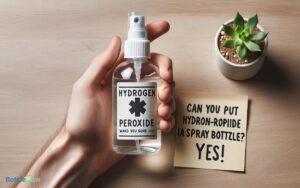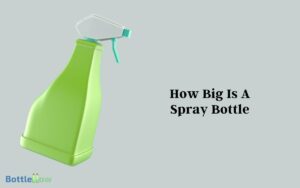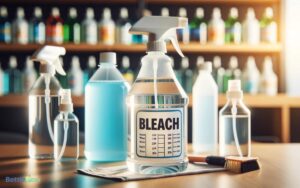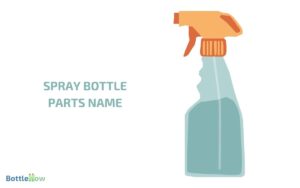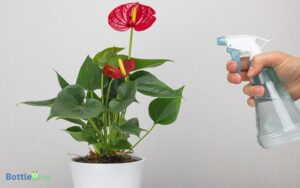Aerosol Vs Spray Bottle: A Comparative Analysis!
You’ll notice that aerosol cans use propellants under pressure to deliver a fine mist, while spray bottles employ a manual pump mechanism for variable spray output.
Aerosols, containing volatile organic compounds, contribute to ozone formation and have flammability risks due to their pressurized nature.
In contrast, spray bottles are safer, generate less waste, and are easier to recycle, posing fewer environmental concerns. Long-term, spray bottles are more cost-effective with refillable options available.
Each has its specific applications and impacts, and understanding these can help you make a more informed choice that benefits your needs and the environment. Further insights await to enhance your understanding.
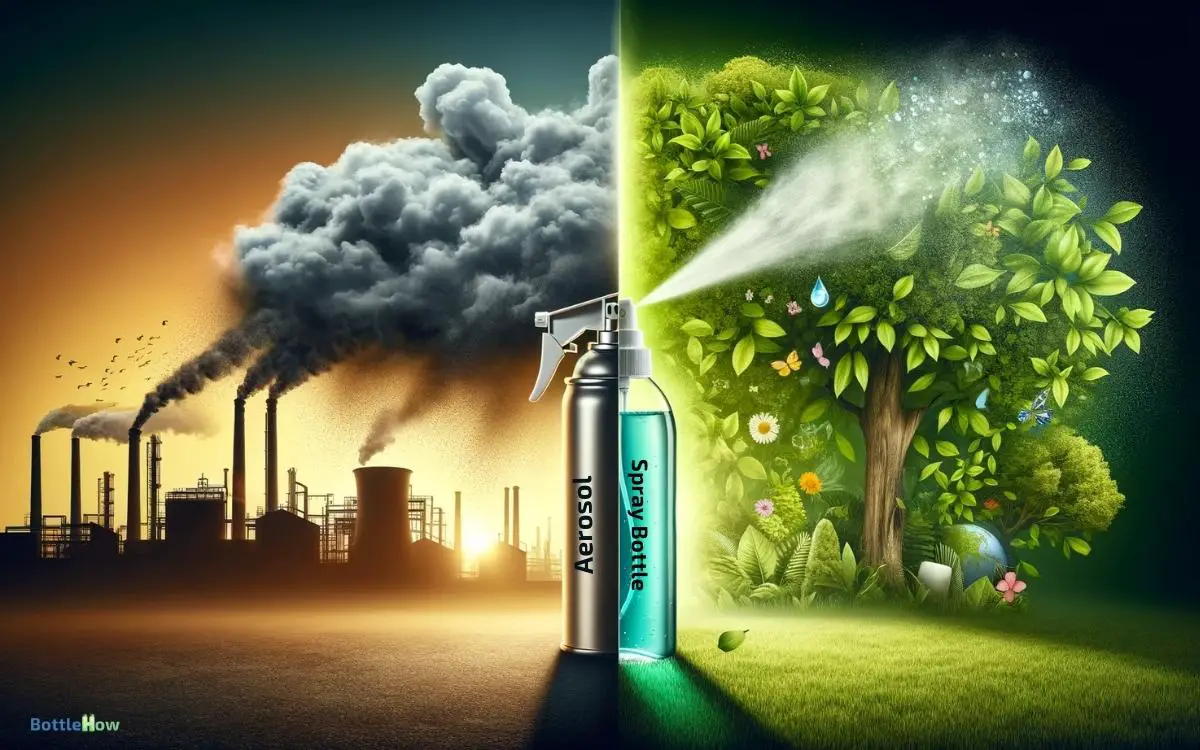
Key Takeaways
Comparison of Aerosol and Spray Bottle Systems
| Aspect | Aerosol | Spray Bottle |
|---|---|---|
| Mechanism | Pressurized gas propels liquid | Manual pump mechanism |
| Particle Size | Fine mist | Larger droplets |
| Coverage | Broad, even coverage | More controlled, can be targeted |
| Consistency | Continuous, consistent spray | Depends on manual pumping action |
| Usability | Easy to use, no manual effort | Requires manual effort |
| Portability | Lightweight, easy to carry | Can be bulky depending on size |
| Environmental Impact | Often contains propellants that can be harmful to the environment | Generally more environmentally friendly |
| Refillability | Typically not refillable | Often refillable |
| Cost | Generally more expensive | Usually more cost-effective |
| Applications | Ideal for cosmetics, air fresheners, and paints | Common for cleaning solutions, gardening, and hair products |
| Safety | Flammable, risk of inhalation | Generally safer |
| Shelf Life | Long, stable under pressure | May degrade faster, subject to leaks |
Understanding Aerosol Cans
Aerosol cans, often utilized for their convenience and efficiency, employ a propellant to disperse a product as a fine mist.
You’re likely familiar with these as they’re used in various applications from household cleaning to personal care.
The technology behind aerosol cans is quite fascinating; they create a sealed environment where the propellant—a usually volatile substance—is stored under pressure.
When you press the nozzle, this pressure is released, forcing the contents out through a small opening, atomizing them into tiny droplets that form a mist.
This method offers a uniform application, which is essential in fields like healthcare where precise dosages of medication are important.
Understanding these mechanics helps in optimizing usage and improving safety, greatly benefiting service-oriented sectors by enhancing efficiency and control.
Exploring Spray Bottles
As you explore various spray bottles, you’ll find that they come in different types, each designed to meet specific needs and applications.
It’s crucial to understand how to maintain these tools properly to guarantee their longevity and effectiveness.
Research indicates that regular cleaning and checking for clogs can greatly extend the life of your spray bottles.
Types of Spray Bottles
| Type of Spray Bottle | Common Usage | Features |
|---|---|---|
| Trigger Sprayers | Gardening, household cleaning | Adjustable nozzles for controlling spray pattern (fine mist to steady stream) |
| Pump Spray Bottles | Personal care, medical applications | Requires a few pumps to pressurize the liquid, provides controlled release |
| Industrial Spray Bottles | Janitorial work, landscaping | Larger capacities, robust mechanisms, designed to withstand frequent use and harsh chemicals |
Maintenance Tips
Regular Cleaning
- Clean the nozzle regularly to prevent clogging.
- Use distilled water mixed with a mild detergent to flush out residue.
Drying
- Thoroughly dry all parts after cleaning to avoid mold growth.
Inspecting and Replacing Gasket
- Inspect the gasket for cracks or wear.
- Replace the gasket as needed to maintain a tight seal and prevent leaks.
Monthly Testing
- Test the spray action monthly to ensure the pump mechanism is in good working order.
- Check for weak or inconsistent spray and inspect the spring and valve for damage.
Component Maintenance
- Regularly maintain all components to extend the life of the spray bottle and ensure optimal performance.
Mechanisms of Dispensing
Understanding the mechanisms of dispensing in aerosols and spray bottles reveals key differences in their design and function.
Aerosols utilize propellants, typically gases like propane or butane, that are stored under pressure. When you press the nozzle, this pressure releases, forcing the contents out as a fine mist.
In contrast, spray bottles operate through a pump mechanism. You manually compress the pump, which creates a vacuum pulling the liquid up a tube and expelling it as a spray.
| Feature | Aerosol | Spray Bottle |
|---|---|---|
| Dispensing Medium | Propellant (gas under pressure) | Manual pump mechanism |
| Output Form | Fine mist | Variable spray |
| Pressure Source | Internal pressure | User-generated pressure |
Environmental Impact Comparison
When comparing the environmental impact of aerosol cans and spray bottles, you’ll find significant differences in emission levels, waste production, and resource consumption.
Aerosols often emit more volatile organic compounds, contributing to air pollution and potential health risks.
Meanwhile, spray bottles tend to generate less waste and consume fewer resources, making them a more sustainable choice in many scenarios.
Emission Levels
Aerosol cans typically emit higher levels of volatile organic compounds (VOCs) compared to spray bottles, greatly impacting environmental pollution.
You should be aware of several key points regarding the emission levels from these containers:
- VOC Contribution: Aerosols contribute notably to ground-level ozone formation, a primary component in smog.
- Global Warming Potential: Some aerosols contain gases with high global warming potential, enhancing their environmental footprint.
- Regulation and Compliance: There are stricter regulations for aerosols due to their chemical propellants, affecting how they can be used and disposed of.
- Health Impacts: Elevated VOC levels can lead to serious health issues, including respiratory problems and skin irritation.
Understanding these factors helps you make informed decisions about which products to use and recommend in service-oriented settings.
Waste Production
Beyond emission concerns, it’s important to ponder how aerosol cans and spray bottles vary considerably in their waste production and overall environmental impact.
Aerosol cans, made primarily of metal, often combine aluminum and steel, which require specialized recycling processes.
Despite being recyclable, many end up in landfills due to improper disposal practices. You’ll find that the complexity of these cans increases the likelihood of non-recyclable waste.
On the other hand, spray bottles are mainly plastic, simpler in design, and more frequently recycled correctly. However, they’re not without fault.
Their plastic components can degrade into microplastics, persisting in ecosystems and posing risks to wildlife and human health.
Choosing wisely between these options can greatly influence your environmental footprint and contribute to sustainable practices.
Resource Consumption
When evaluating the environmental impact of aerosol cans versus spray bottles, it’s important to analyze their resource consumption during production and lifecycle.
| Aspect | Aerosol Cans | Spray Bottles |
|---|---|---|
| Material Use | Require aluminum and specific propellants, involving intensive mining and manufacturing processes | Mainly use plastics, less energy-intensive to produce but concerns about petroleum consumption and recyclability |
| Energy Consumption | Higher due to the complexity of sealing and pressurization | Generally less energy-consuming to manufacture |
| Transport Efficiency | Heavier weight and bulk result in higher transportation energy costs | Lighter and more compact, leading to lower transportation energy costs |
| Lifecycle Durability | Typically single-use, leading to higher resource consumption over time | Often last longer and can be refilled, reducing total resource consumption over time |
Health and Safety Concerns
Understanding the health and safety concerns associated with aerosols and spray bottles is crucial as they can pose significant risks if not used properly.
Aerosol cans, containing propellants like butane, are pressurized and can become highly flammable, posing fire hazards.
They also release volatile organic compounds (VOCs), impacting indoor air quality and potentially causing respiratory issues.
In contrast, spray bottles, which typically utilize a pump mechanism without propellants, are safer regarding fire risk.
However, you’re still at risk from the chemicals they disperse, which can irritate skin, eyes, and lungs if not handled correctly.
Always make sure you’re using these products in well-ventilated areas and wearing appropriate protective gear to mitigate these risks.
Cost Differences
You’ll find that the initial purchase price of aerosol cans typically exceeds that of spray bottles.
However, conducting a long-term expense analysis is important as it reveals the ongoing costs associated with each option, influenced by factors like durability and refill capacity.
This analysis helps you understand which solution offers better value over time.
Initial Purchase Price
Aerosol cans typically cost more initially than spray bottles due to their complex mechanisms and production processes.
When you’re deciding which to purchase, consider these cost-driving factors:
- Material Costs: Aerosols use a combination of metals and specific chemicals, which are generally more expensive.
- Production Technology: The technology for sealing and pressurizing aerosol cans is more advanced, increasing manufacturing costs.
- Regulatory Compliance: Aerosols must meet stringent safety standards due to their contents and pressurization, which can drive up initial prices.
- Design and Testing: Aerosols undergo rigorous testing to prevent leaks and ensure functionality, adding to the initial cost.
Understanding these elements helps you make informed decisions that serve your needs and budget effectively.
Long-Term Expense Analysis
When considering the long-term costs, spray bottles often prove less expensive due to lower refill expenses and minimal maintenance requirements.
Over time, you’ll find that the investment in a reusable spray bottle pays off as you purchase cost-effective bulk liquid solutions rather than repeatedly buying new aerosol cans.
Here’s a breakdown to help you understand the cost differences:
| Cost Factor | Aerosol Can | Spray Bottle |
|---|---|---|
| Initial Purchase | Higher | Lower |
| Refill Costs | N/A | Markedly lower |
| Maintenance | None | Minimal |
Durability and Longevity
Spray bottles generally offer greater durability and longevity compared to aerosol cans, as they rely on simpler mechanical functions that are less prone to failure.
When you’re choosing between these options, consider the following aspects that highlight the robustness of spray bottles:
- Material Strength: Spray bottles are often made of durable plastics or metals that withstand frequent use and drops.
- Mechanical Simplicity: The trigger mechanism in spray bottles has fewer moving parts, reducing the likelihood of malfunction.
- Maintenance Possibility: Parts of spray bottles can often be replaced or repaired, extending their useful life.
- Environmental Factors: Unlike aerosols, which can degrade over time due to propellant leakage, spray bottles maintain functionality without reliance on chemical propellants.
These factors guarantee that your choice in spray bottles serves you longer, supporting your commitment to sustainable practices.
Variety of Uses
One significant advantage of spray bottles is their versatility across various applications, from household cleaning to gardening.
You’ll find their utility extends well beyond simple tasks. For instance, in household cleaning, using a spray bottle allows precise application of cleaning agents, minimizing waste and ensuring effective surface coverage.
In gardening, a spray bottle can deliver a gentle mist for delicate plants which might be damaged by heavier watering methods.
Here’s a quick look at their diverse applications:
| Application Area | Specific Use |
|---|---|
| Household | Cleaning surfaces |
| Gardening | Watering delicate plants |
| Beauty | Applying hair products |
| Automotive | Detailing interiors |
| Healthcare | Sanitizing equipment |
Employing spray bottles in these areas not only maximizes efficiency but also supports sustainable practices by reducing product waste.
Innovations and Trends
As the demand for eco-friendly and efficient products grows, innovations in spray bottle technology continue to evolve, enhancing both functionality and environmental sustainability.
Here’s what you need to know about the latest trends:
- Biodegradable Materials: Manufacturers are now utilizing materials like PLA (polylactic acid) which is derived from renewable resources like corn starch, making these spray bottles compostable and reducing plastic waste.
- Refillable Designs: To minimize waste, refillable spray bottles are becoming increasingly popular. These designs encourage users to purchase bulk liquids and refill their bottle, drastically cutting down on single-use plastics.
- Adjustable Nozzles: Enhanced nozzle designs offer adjustable settings for spray intensity and patterns, maximizing efficiency while reducing excess consumption.
- Integrated Smart Technology: Some newer models feature smart technology that tracks usage and alerts when refills are needed, ensuring peak performance and resource management.
Making the Right Choice
When deliberating between an aerosol and a spray bottle, it’s important to take into account their environmental impact and functionality.
Aerosols often contain propellants that can harm the atmosphere, contributing to air pollution and global warming.
In contrast, spray bottles typically use a pump mechanism that doesn’t emit harmful gases and often can be refilled, reducing waste.
You’ll also want to contemplate the precision and coverage needed for your task. Aerosols provide a finer mist that can cover large areas evenly, making them ideal for some applications.
However, if you’re looking for more control over the amount and area sprayed, a pump spray bottle might be the better choice. Choosing wisely helps you serve your community and the planet more effectively.
Conclusion
As you decide between an aerosol can and a spray bottle, think of them as tools in an artist’s kit. Each has its purpose and impact, much like a brush and palette knife.
Data shows that aerosols contribute considerably more to volatile organic compounds in the atmosphere than trigger sprays.
Considering the long-term health and environmental implications, opting for the spray bottle might be akin to choosing watercolors over oil paints—both create beautiful results, but one is gentler on our canvas, the Earth. Sunscreen in a spray bottle offers convenience and even coverage, making it a popular choice for many. However, its aerosol dispersal can introduce harmful chemicals into the air, potentially impacting both personal health and the environment. By opting for more eco-friendly formulations and mindful application, we can better protect ourselves while minimizing our footprint on the planet.

